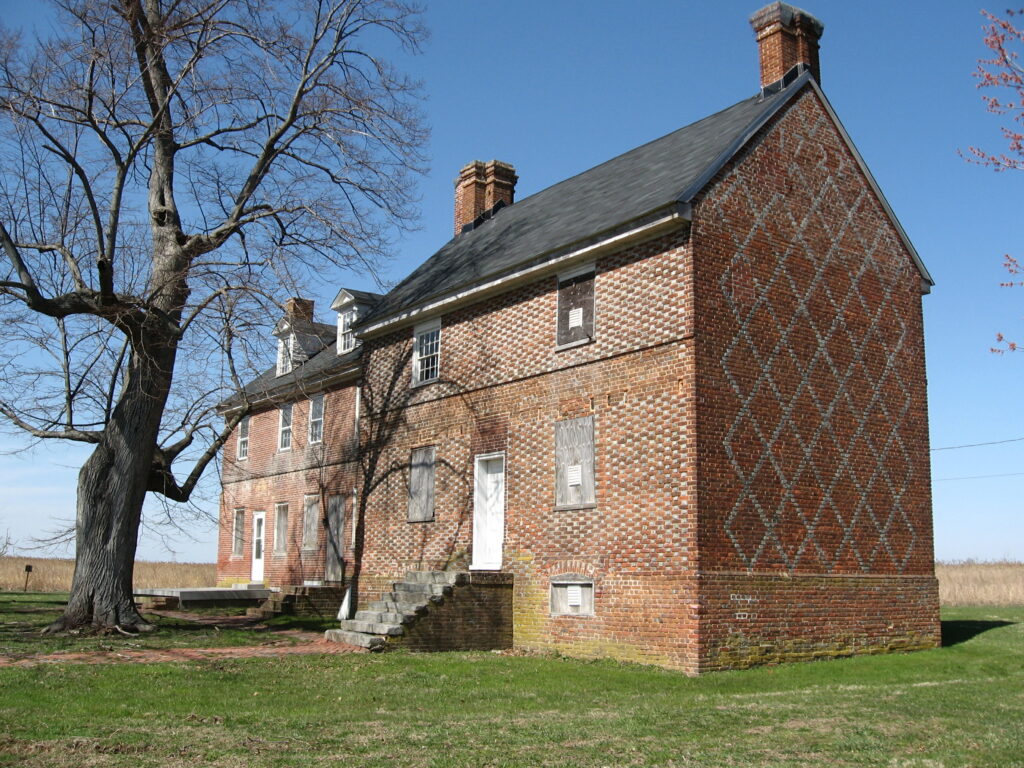National Historic Landmarks (NHL) Program
What is a National Historic Landmark?
The National Historic Landmark Program protects many of our nation’s iconic landmarks. A National Historic Landmark (NHL, or “Landmark”) illustrates, interprets or commemorates United States history. This cultural resource can be a building, site, district, structure or object. Landmarks represent themes and contexts in
- History
- Archaeology
- Architecture
- Engineering
- Culture
The program includes Landmarks as varied as Mount Vernon, Pearl Harbor, the Appollo Mission Control Center, Alcatraz and the Martin Luther King Birthplace. The Secretary of the Interior has recognized over 2,600 Landmarks nationwide. New Jersey has over 50 of these, including
- Craftsman Farms
- Monmouth Battlefield
- Paulsdale
- Ringwood Manor
- Sandy Hook Lighthouse
- Walt Whitman House
National Historic Landmarks Program (NPS)
Visit the National Park Service’s website for more guidance and references on NHLs.
What are the differences between a regular listed resource and an NHL?
The National Park Service (NPS) administers two related programs, NHL and the National Register of Historic Places (“National Register” or NR), under the Department of the Interior. However, these programs follow separate listing processes and criteria. Not all resources eligible for NR listing can become a Landmark. For example, many of our state’s lighthouses are in the National Register because they played key roles in New Jersey history. Of these, only Sandy Hook Light and Navesink Light Station reached the level of significance needed to become NHLs. Built in 1764, Sandy Hook Light is the oldest standing lighthouse in the nation. Navesink Light Station (a.k.a. Twin Lights), built a century later, has a nationally unique fortress-like design and a history of pioneering technology like the first commercial wireless telegraph.
| Decision | National Register | National Historic Landmark |
|---|---|---|
| Significance |
|
|
| Criteria | A-D | 1-6 |
| Exceptions | a-g | 1-8 |
| Submitter |
|
|
| Evaluator | National Register Office | National Park System Advisory Board |
| Final Decision | National Register Office | The Secretary of the Interior |
Criteria and exceptions
The NHL Program uses a set of criteria similar, but not identical, to the National Register of Historic Places. These include:
- 6 Criteria of National Significance
- 8 Exceptions
As with NR listings, a property that falls under an exception can still be eligible but must meet higher standards.
Criteria
Criterion 1
Properties that are associated with events that have made a significant contribution to, and are identified with, or that outstandingly represent, the broad national patterns of United States history and from which an understanding and appreciation of those patterns may be gained.
Criterion 2
Properties that are associated importantly with the lives of persons nationally significant in the history of the United States.
Criterion 3
Properties that represent some great idea or ideal of the American people.
Criterion 4
Properties that embody the distinguishing characteristics of an architectural type specimen exceptionally valuable for a study of a period, style, or method of construction, or that represent a significant, distinctive and exceptional entity whose components may lack individual distinction.
Criterion 5
Properties that are composed of integral parts of the environment not sufficiently significant by reason of historical association or artistic merit to warrant individual recognition but collectively compose an entity of exceptional historical or artistic significance, or outstandingly commemorate or illustrate a way of life or culture.
Criterion 6
Properties that have yielded or may be likely to yield information of major scientific importance by revealing new cultures, or by shedding light upon periods of occupation over large areas of the United States. Such sites are those which have yielded, or which may reasonably be expected to yield, data affecting theories, concepts and ideas to a major degree.
Exceptions
Exception 1
Properties owned by religious institutions or used for religious purposes either historically or currently.
Exception 2
Buildings or structures that have been moved from their original historic location. Exception 2 is most frequently used to justify contributing status of moved buildings within a district.
Exception 3
Site of a building or structure no longer standing.
Exception 4
Birthplaces and graves of historical figures.
Exception 5
Cemeteries.
Exception 6
Reconstructed buildings or grouping of buildings.
Exception 7
Properties that are primarily commemorative in nature.
Exception 8
Properties that have achieved national significance within the past 50 years.
How does a resource become a National Historic Landmark?
Most NHLs are listed in the New Jersey and National Registers first. The exact discovering and listing sequence may vary. For instance, NHLs recognized in the 1960s may predate both Registers.
Identification
NPS identifies most potential Landmarks through theme studies. These analyze and compare properties tied to a specific area of American history, such as Labor or Women’s History. Sometimes, newer studies identify existing NR-listed properties as nationally significant. Other times, theme or other special studies identify properties for the first time. Outside of these studies, citizens or members of other agencies may submit a letter of inquiry to request a preliminary evaluation for a property.
Theme Studies (NPS)
Find the themes referenced on this page and more.
Inquiry (NPS)
If you are interested in writing a letter of inquiry, learn what NPS expects it to contain.
Invitation
The National Historic Landmarks Program then invites a proponent to submit a nomination. Proponents must wait for this before they start the preparation process. If the property falls under one or more eligibility exceptions, it will require additional consultation with NPS staff.
Nomination preparation
The nomination form for an NHL differs from the National Register nomination form. Like the National Register Process, however, it is likely to go through a series of submissions, reviews and revisions before it is ready to go before the NHL Committee.
NR Bulletin: How to Prepare National Historic Landmark Nominations (NPS; HPO copy)
Read NPS’s main bulletin on NHLs to find out how their nominations differ from National Register of Historic Places nominations.
National Historic Landmarks Committee decision
Once a nomination is ready, it moves to the National Historic Landmarks Committee (“NHL Committee” or “Landmarks Committee”), a subcommittee of the National Park System Advisory Board. This subcommittee contains scholars and experts from across the nation with backgrounds in
- History
- Archaeology
- Architectural history
- Historic preservation
- Related cultural resources disciplines
They hold open public meetings twice a year. For each candidate, they review a presentation and vote on whether to recommend the property for further consideration.
National Park System Advisory Board decision
After this recommendation, the nomination advances to the National Park System Advisory Board. This board’s members are citizens selected by NPS for their dedication to conservation. They review the nomination and determine whether it meets the conditions for NHL designation. If they agree, they forward their recommendation to the Secretary of the Interior.
Secretary of the Interior decision
The Secretary of the Interior, who oversees the National Park Service’s parent agency, makes the final decision to designate the candidate.
Owning a National Historic Landmark
Owner rights
NHL or Register listing does not generally restrict private property owners. A private owner or the majority of private owners can object to a Landmark designation. NPS may recommend various preservation actions to owners, but owners are not obligated to follow them. As long as public funding, licensing or permits are not involved, owners are free to make whatever changes they wish. Publicly funded projects, however, come with a measure of protection for NHLs under state and federal regulations.
Grants and incentives
Designating a property as an NHL may provide it with additional protections from development. It may also make the property eligible for preservation grants and technical preservation assistance. Some of the available grants and incentives give priority to NHLs.
NHL Grants and Tax Incentives (NPS)
Visit NPS’s website for more information on available grants and incentives.
Economic incentives
Explore grants and tax incentives that other government agencies offer to listed properties.
NPS benefits
NPS benefits
Official plaque
Landmark owners receive a bronze plaque to display at the property. The National Park Service provides these at no cost to the owner.
Technical assistance
Preservation issues fall under the domain of regional NHL offices. If you have questions about available preservation services, ask your regional NHL office. For New Jersey, this is the Northeast Regional Office.
NHL Program — Northeast Regional Office (NPS)
Contact the regional office that covers the entire northeast region, including New Jersey.
Publications
NPS publications cover a variety of preservation subjects of interest to Landmark owners. Digital copies of more recent publications are available online through the main NPS website. Alternately, if you are not sure where to start, contact the NHL program manager or your regional NHL office for a catalog of publications.
Cultural Resources Publications (NPS)
Use this directory to browse the publication series that NPS shares online.
Re-evaluation
Conditions monitoring
From time to time, NPS may contact owners about the condition of Landmarks and/or request a visit. NPS is required by law to monitor the condition of NHLs and report them to Congress. Their annual reports identify the nature of the threat and damage, then recommend ways to preserve the Landmark. This report informs and spurs action from both Congress and preservation community. It does not require compliance actions for any Landmarks identified in the report. However, if a Landmark loses its eligible qualities, its designation will be removed.
36 CFR 65.7: Monitoring National Historic Landmarks (eCFR)
Read the original federal code describing NPS’s responsibilities.
In-depth property assessments
NPS funds and coordinates annual in-depth property assessments as funding permits. They include assessments of individual buildings and executive summaries of the year’s assessments. This work raises awareness of Landmarks’ significance and preservation needs. First, they select a limited number of Landmarks to
- Analyze the specific condition of the Landmark.
- Identify the type and priority of recommended work treatments.
- Estimate the costs for carrying out the treatments.
Next, if funded, they compile this information into a building condition assessment report. They share this report with
- Owners
- Preservation organizations
- Interested public and private groups
Then, if still funded, they use these reports to create an executive summary called Landmarks at Risk. They share this broader report with
- Owners
- Local governments
- Community organizations
- Visitors





